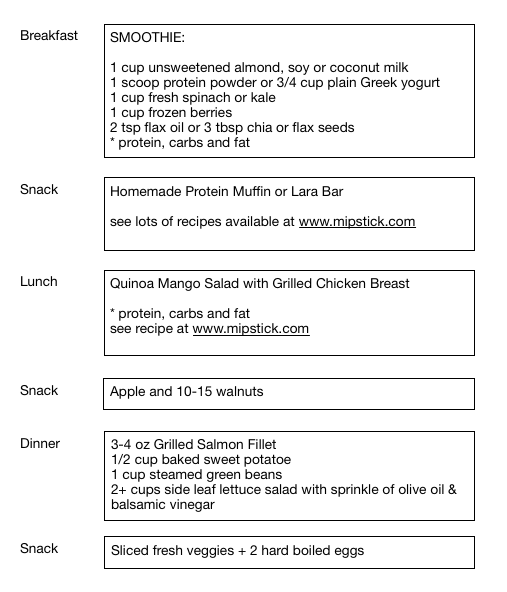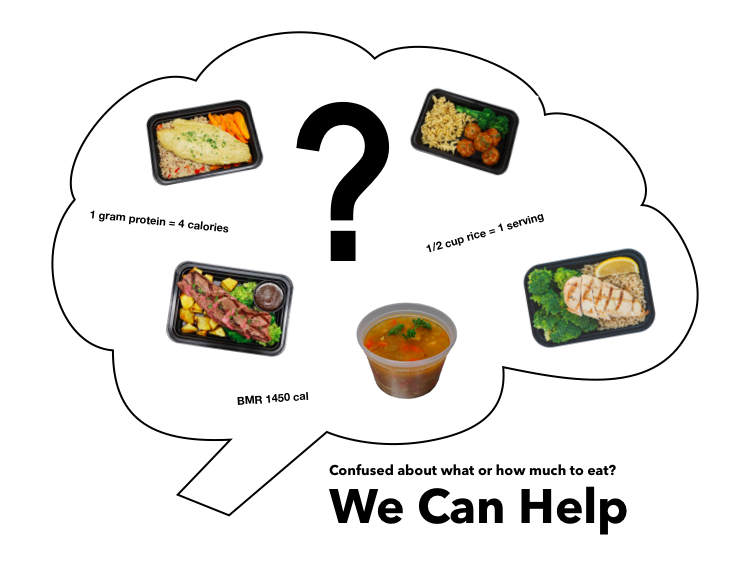July 5, 2017
Whole grains are good for you. Wait, or are grains bad? And what about gluten; what IS gluten anyway?
Are carbs really so bad? Do I need more fats?
Why do some vegetables bloat me? Are fruits bad for me if I’m trying to lose weight?
If a vegetarian diet has so many health benefits, why do I also hear that I need more protein?

No wonder we’re confused about nutrition! There’s so much conflicting information available out there, and varying “diets” with opposing philosophies, it can be overwhelming and discouraging trying to eat well. Even healthy foods can be “bad” for you depending on your own unique biochemistry. For example, you’ll want to reduce raw cruciferous vegetables (broccoli, cauliflower, cabbage) if you have signs of low thyroid function. Onions and garlic are cleansing to the liver and super rich in anti-oxidants for the immune system, but can contribute to intestinal distress for those with digestive vulnerabilities. And no mushrooms for you if you’re prone to yeast or fungal infections.
The what-to-eat part is coming, I promise.
But don’t throw in the towel in frustration just yet. An educated and certified nutrition expert stays abreast on current science, can help sort through conflicting information, and determine what your unique needs are. And they are unique. So beware the nutritionist who preaches one “diet” or specific menu plan. At the risk of confusing you even more, even nutritionists can have very differing approaches. Just as you may “try on” a couple different massage therapists or hairdressers, don’t hesitate to interview more than one nutritional consultant to find the best fit for you.
Here’s what you need to know:
A diet should never be cookie-cutter. Your body is unique and so should your nutrition be. Your current physiology, lifestyle and goals all collectively determine how to best fuel your body at any given time.
This is mipstickYvette’s holistic approach. We don’t like diet labels. We are simply about finding the foods that best support your body right now in your life. Our comprehensive and customized nutritional programs are developed for your specific needs and goals.
That’s why it can be difficult to answer the big question is: In general, what and how much should I be eating?
I know, we all want some quick easy answers, right? Okay, here are a few “staples” to get you started on a good path.
-
GRAINS & GLUTEN:
Whole grains (brown and wild rice, oatmeal, buckwheat) generally contain more nutrients, and are therefore healthier for our bodies than processed grains (any white or “quick” varieties) because processing removes many of these nutrients.
Gluten is a hot topic, no one can deny that! Check out our recent blog on gluten that explains it a little more, but here’s what you should know for now:
a) our wheat has changed over the decades due to the commercial processing of it; thereby changing the composition of a protein in it called gluten
b) our bodies have changed over several decades due to many new dietary and environmental assaults; and the integrity of our digestive and intestinal systems has been compromised as a result. This has reduced our bodies’ ability to tolerate gluten. For most people, even those with little obvious digestive signs of sensitivity, gluten is not well tolerated by the body; and many seemingly unrelated symptoms or issues improve with removal of dietary gluten.
-
CARBS
Thirty plus years ago, science showed how carbohydrates are our main source of energy, and athletes and layman alike started loading up on bread, pasta and donuts daily. In recent years, carbs have been demonized in the media for contributing to obesity and metabolic disorders. As a result, several versions of low-carb and even zero carb diets became increasingly popular. Now we find people are quite literally starving their bodies of essential carbohydrates, and often finding themselves later binging as result of extreme hunger and/or fatigue.
Right kinds:
- whole grains (preferably gluten-free): oats, buckwheat, quinoa, millet, long grain rice varieties
- root vegetables: sweet potatoes, squash varieties
- fruits & vegetables: yes, these are carbs too
- the best healthy carbs for you will be determined by your unique body (ie: digestive function)
Not-so-right kind (for everyone!):
- Processed white bread, pasta
- Refined sugar products
- Chips, pastries, white buns & bagels, commercial baked products (donuts, cookies, cakes) etc
The appropriate serving size for you will depend on several factors; such as:
- Your activity level
- Your metabolic rate
- Your current size/body weight
For most adult women, an appropriate serving size of carbohydrates is about ½ cup of cooked grain or root vegetable, and one whole fruit or cup of berries. For a man, an appropriate size is up to double this. How many servings per day, or how many total grams of carbohydrates per day you need will depend not only on the above noted factors, but also on what your specific goals are – be it weight loss, muscle gain, energy production, etc. An experienced nutritionist can help you calculate your individual needs (contact us to chat further).
-
PROTEIN
Just as the body cannot function properly without carbohydrates, protein is crucial not only to muscle development and function, but also plays an important role in hormone production, neurotransmitter production, collagen and joint integrity, and so much more. Without adequate dietary protein intake, the body is unable to produce several of the essential amino acids required by vital chemical reactions and processes in the body.
Just like carbohydrates, any protein source that is most closely to it’s original natural state will be more nutritious and less damaging to the body than it’s processed counterpart. For example, a baked chicken breast is a higher quality protein source than processed deli chicken slices or than deep-fried breaded chicken wings. Quality protein sources include poultry, fish, lean cuts of beef or bison, eggs, and a clean protein powder (those with no added sugars or chemical flavors and sweeteners).
Also like carbohydrates, your daily protein needs will depend largely on your own body and goals. A typical serving size for a women is about 3-4 oz and for a man 5-6 oz for meat protein. Bodybuilders, or people in growth phases (teens, pregnancy) may require more protein. Additionally, protein can in fact, support weight loss when combined with a slight and monitored decrease in carbohydrate intake.
-
HEALTHY FATS
You guessed it, the amount needed can vary for each individual. However, we know that too much fat intake will quickly contribute to increased stored body fat, but what many people don’t realize is the dangers of consuming inadequate dietary fats. Poor skin health, intestinal disturbances, reduced concentration, mood instability, and hormonal imbalances are just some of the many effects of dietary fat deficiency.
Healthy fats include raw nuts and seeds, avocado, oils (coconut, olive, avocado, etc), fatty fish (salmon, halibut), butter, egg yolks, chia, flax and hemp seeds. A serving is quite small, only about 10-15 almonds, 2 tsp of oil, ½ avocado – so you can see how easy it would be to overdo it where fats are concerned.
Aim to eat 5 different colors of fruits and vegetables each day and you’ll get a broad spectrum of nutrients to optimally fuel the body. ”
-
FRUIT & VEGETABLES
Fruits and vegetables are loaded with tons of nutrients and anti-oxidants that play crucial and varied roles in the body! Interestingly, the different colors usually correlate with different types of nutrients in the food. But rather than bore you with those sciencey details, I like to say “Eat the rainbow”. Aim to eat 5 different colors each day and you’ll get a broad spectrum of nutrients to optimally fuel the body. Here’s an example:
- Yellow pepper
- Red tomatoes
- Green spinach
- Orange
- Blueberries
For the record, no science has ever shown a danger in consuming too many fresh fruits and vegetables! Other than increased bowel function (which many of us could benefit from) there’s no reason not to include veggies in as many meals and snacks as you can think of. I like to hide mine in smoothies and meatloafs – no one even knows they’re there!
As for fruit, Noooooooo! Don’t avoid fruit for fear of their natural sugar. There are so many important nutrients in fruit that will support metabolism and fat loss, you are better off having 1-2 servings per day, even when trying to shed body fat. If blood sugar instability is a concern, be sure to consume a small portion of protein or healthy fat with your fruit to help minimize any blood sugar spikes that may contribute to subsequent cravings or increased hunger. For more information of blood sugar instability and weight management, contact us to chat about our Sweet Escape Blood Sugar Balancing Nutrition Program.
Balancing It All Out
Balance is key… and I don’t mean eating a twinkie for every serving of vegetables you eat! As a general nutrition rule, aim to eat a balance of all the macronutrients (carbohydrates, protein and fats) at most of your meals and snacks. This will ensure a balance of nutrients and balanced blood sugars to support all metabolic processes. Maintain general suggested serving sizes for these foods and you are on your way!
Sample for a 140 lb moderately active woman with a goal of losing 10 lbs at a healthy rate of 1-2 lbs per week:

Need guidance determining your unique dietary needs based on your body, goals and lifestyle?
Confused About What or How Much To Eat? Here’s What You Need to Know
The entire contents of this website are based upon the opinions of Build Holistic Nutrition. Please note that Build Nutrition is not a dietitian, physician, pharmacist or other licensed healthcare professional. The information on this website is NOT intended as medical advice, nor is it intended to replace the care of a qualified health care professional. This content is not intended to diagnose or treat any diseases. Always consult with your primary care physician or licensed healthcare provider for all diagnosis and treatment of any diseases or conditions, for medications or medical advice, as well as before changing your health care regimen.
© BUILD NUTRITION 2025. ALL RIGHTS RESERVED. PRIVACY POLICY
Go ahead, creep us on social. You know you want to!
